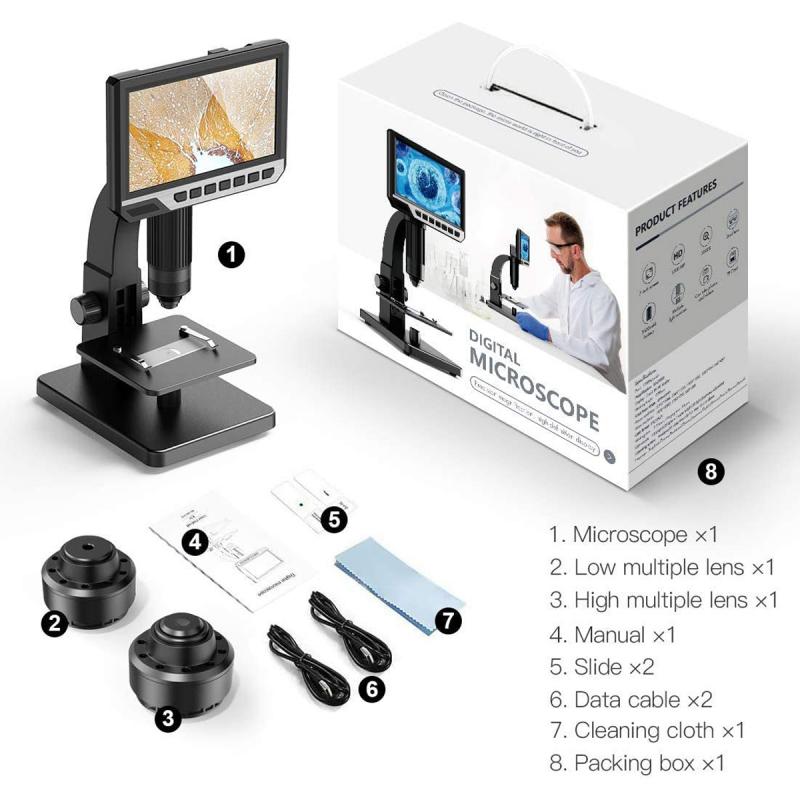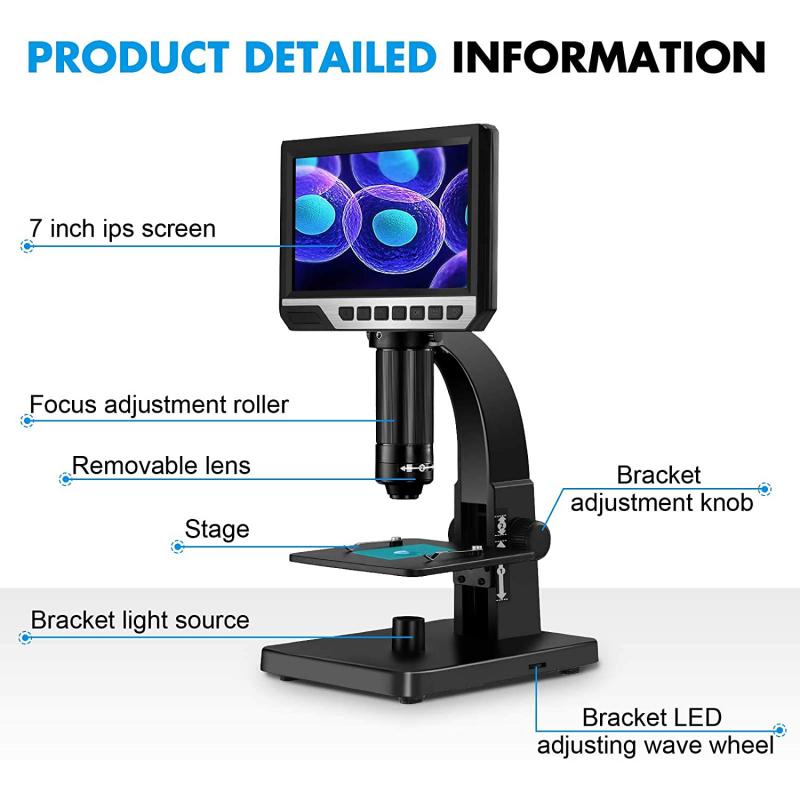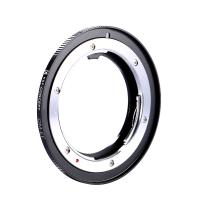What Are The Different Lenses On A Microscope ?
There are several different types of lenses on a microscope, including the objective lenses and the eyepiece lens. The objective lenses are located on the revolving nosepiece and are responsible for magnifying the specimen. They come in various magnification powers, such as 4x, 10x, 40x, and 100x. The eyepiece lens, also known as the ocular lens, is located at the top of the microscope and is used to further magnify the image produced by the objective lenses. It typically has a magnification power of 10x. Additionally, some microscopes may have additional lenses, such as condenser lenses, which help focus the light onto the specimen, or immersion lenses, which require the use of a special oil to achieve higher magnification.
1、 Compound microscope lens
The different lenses on a microscope play a crucial role in magnifying and resolving the details of the specimen being observed. One of the primary lenses found in a microscope is the compound microscope lens. This lens consists of two or more lenses that work together to provide high magnification and resolution. The compound microscope lens typically includes an objective lens and an eyepiece lens.
The objective lens is located near the specimen and is responsible for gathering light and forming the initial magnified image. It comes in various magnification powers, such as 4x, 10x, 40x, and 100x, allowing users to observe the specimen at different levels of detail. The eyepiece lens, on the other hand, is located near the viewer's eye and further magnifies the image formed by the objective lens. It typically has a magnification power of 10x.
In addition to the compound microscope lens, there are other lenses that can be used to enhance the capabilities of the microscope. For example, a condenser lens is often present beneath the stage and helps focus the light onto the specimen, improving the clarity of the image. Some microscopes also have a variable diaphragm that can be adjusted to control the amount of light passing through the condenser lens.
Moreover, advancements in technology have led to the development of specialized lenses for specific applications. For instance, there are immersion lenses that require the use of a liquid, such as oil or water, between the lens and the specimen to minimize light refraction and increase resolution. These immersion lenses are particularly useful for high-magnification observations.
In conclusion, the compound microscope lens, consisting of the objective and eyepiece lenses, is the primary lens system in a microscope. However, additional lenses like the condenser lens and immersion lenses can be incorporated to enhance the microscope's performance and provide greater clarity and resolution.

2、 Objective lens
The objective lens is one of the most important components of a microscope as it determines the magnification and resolution of the image. There are typically several objective lenses on a microscope, each with a different magnification power. These lenses are designed to provide a range of magnifications to suit different scientific needs.
The most common objective lenses found on microscopes are the 4x, 10x, 40x, and 100x (oil immersion) lenses. The 4x lens provides the lowest magnification and is often used for scanning large areas of a specimen. The 10x lens is commonly referred to as the low-power lens and is used for general observation and initial examination. The 40x lens, known as the high-power lens, provides a higher level of magnification and is used for more detailed examination of specimens. The 100x lens, which requires the use of immersion oil, provides the highest magnification and is used for observing very fine details.
In recent years, there have been advancements in microscope technology, leading to the development of specialized objective lenses. For example, there are now objective lenses with higher numerical apertures, which allow for improved resolution and clarity of the image. Additionally, there are objective lenses specifically designed for fluorescence microscopy, which enable the visualization of specific molecules or structures within a specimen.
Overall, the objective lenses on a microscope play a crucial role in determining the level of detail and magnification that can be achieved. The availability of different lenses allows scientists to adapt their microscopy techniques to suit their specific research needs, providing a more comprehensive understanding of the microscopic world.

3、 Eyepiece lens
The different lenses on a microscope include the eyepiece lens, objective lenses, and condenser lens. The eyepiece lens, also known as the ocular lens, is the lens that is closest to the viewer's eye. It typically magnifies the image by 10x, allowing the viewer to see a larger and more detailed image of the specimen.
The objective lenses are located on the revolving nosepiece of the microscope and are responsible for magnifying the specimen. Microscopes usually have multiple objective lenses with different magnification powers, such as 4x, 10x, 40x, and 100x. These lenses allow the viewer to observe the specimen at different levels of magnification, from low to high power.
The condenser lens is located beneath the stage of the microscope and is responsible for focusing the light onto the specimen. It helps to improve the clarity and resolution of the image by directing a concentrated beam of light onto the specimen.
In recent years, there have been advancements in microscope technology, leading to the development of new types of lenses. For example, some microscopes now come with digital eyepiece lenses that can capture images and videos of the specimen directly onto a computer or other digital device. This allows for easier documentation and sharing of observations. Additionally, there are specialized lenses available for specific applications, such as fluorescence microscopy, which uses fluorescent dyes to label specific structures within the specimen.
Overall, the different lenses on a microscope work together to provide a magnified and detailed view of the specimen, allowing scientists and researchers to study and understand the microscopic world.

4、 Condenser lens
The different lenses on a microscope play a crucial role in magnifying and focusing the specimen being observed. One of these lenses is the condenser lens, which is an essential component of the microscope's illumination system. The condenser lens is located beneath the stage and is responsible for directing and focusing light onto the specimen.
The primary function of the condenser lens is to gather and concentrate light from the microscope's light source onto the specimen. It helps to create a uniform and intense light beam that illuminates the specimen evenly. By adjusting the position of the condenser lens, the amount of light reaching the specimen can be controlled, allowing for optimal illumination.
In addition to controlling the amount of light, the condenser lens also affects the resolution and contrast of the image. By adjusting the aperture of the condenser, the numerical aperture (NA) can be changed, which determines the resolving power of the microscope. A higher NA allows for greater resolution, resulting in a clearer and more detailed image.
It is important to note that the use of the condenser lens has evolved over time. In traditional microscopes, the condenser lens was a single lens element. However, modern microscopes often employ complex condenser systems, such as the Abbe condenser, which consists of multiple lens elements and an iris diaphragm. These advanced condenser systems provide improved control over illumination and enhance the overall performance of the microscope.
In conclusion, the condenser lens is a vital component of a microscope's illumination system. It gathers and focuses light onto the specimen, controls the amount of light reaching the specimen, and influences the resolution and contrast of the image. The use of advanced condenser systems has further enhanced the capabilities of modern microscopes.







































